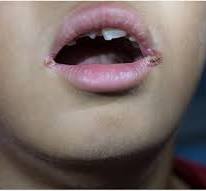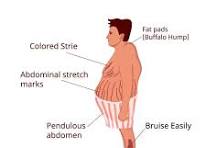INTRODUCTION:
HEALTH IS WEALTH-No one can take care of your health like you even the doctors
only help to manage it but it’s your personal responsibility.
A simple yet profound truth. One sickness can drain a
lifetime of savings, leaving individuals and families in distress. While modern
medicine has made remarkable strides in diagnosing and treating diseases, many
health conditions continue to defy medical solutions, pushing us to explore
alternative approaches.
NATURAL REMEDIES FOR BAKER’S CYST
Baker’s cyst, also known as popliteal cyst, is a fluid-filled swelling that
develops behind the knee, often due to underlying joint issues such as
arthritis or a knee injury. This condition can cause discomfort, stiffness,
and a feeling of tightness, particularly when the leg is extended or
during physical activity. While medical treatment may involve draining
the fluid or addressing the underlying joint condition, natural remedies
can serve as complementary options to reduce pain and inflammation.
Below are several herbs and home-based treatments that may help
manage symptoms:
1. Turmeric:
Turmeric is widely known for its potent anti-inflammatory
properties due to its active compound, curcumin. It can help
reduce joint swelling and relieve pain associated with Baker’s
cysts.
Preparation: Mix 1 teaspoon of turmeric powder with warm
water or a carrier oil to make a paste.
Usage: Apply this paste to the swollen area and leave it for 15–
20 minutes before rinsing off with warm water. Repeat 2–3 times
daily for best results.
2. Ginger
Ginger contains gingerol, a compound that reduces inflammation
and pain. It promotes circulation and supports natural healing.
Preparation: Grate fresh ginger and combine with warm water to
form a thick paste.
Usage: Apply to the affected knee for 15–20 minutes, then rinse.
This can be done two to three times a day.
3. Epsom Salt Soak
Magnesium-rich Epsom salts help reduce muscle tension and
inflammation in the affected area.
Preparation: Dissolve 1–2 cups of Epsom salt in a warm bath.
Usage: Soak the affected leg for about 20 minutes. Repeat this 2–
3 times a week, especially after physical activity.
4. Arnica
Arnica is an herbal remedy often used for bruises, muscle
soreness, and swelling. Its anti-inflammatory effects can ease
discomfort around the knee.
Preparation: Use arnica gel or cream as directed on the product
label.
Usage: Apply to the back of the knee gently 2–3 times daily,
avoiding open wounds.
5. Willow Bark:
Willow bark acts as a natural analgesic due to its salicin content,
which mimics the pain-relieving properties of aspirin.
Preparation: Available in capsule or tea form from health food
stores.
Usage: Take as directed by the manufacturer. Consult a doctor if
you are on medication, especially anticoagulants or NSAIDs.
6. Hot and Cold Compress:
Alternating hot and cold treatments can reduce stiffness and fluid
build-up. The heat improves circulation while the cold constricts
blood vessels to ease swelling.
Preparation: Use a warm towel or heating pad followed by an ice
pack wrapped in cloth.
Usage: Apply heat for 15–20 minutes, then switch to cold for 10–
15 minutes. Repeat as needed throughout the day.
7. Cayenne Pepper:
Cayenne contains capsaicin, which helps block pain signals by
desensitizing nerve endings.
Preparation: Mix 1–2 teaspoons of cayenne pepper with warm
water or a base oil to make a paste.
Usage: Apply to the back of the knee and rinse off after 15–20
minutes. Use 2–3 times daily, but avoid applying to broken skin.
Key Considerations
While these natural remedies can offer symptomatic relief, they should
not be used as substitutes for professional medical advice. Baker’s cysts
are often secondary to other joint conditions, and without addressing
the root cause, symptoms may recur or worsen. Moreover, some natural
treatments may interact with medications or irritate sensitive skin.
It’s important to test any topical remedy on a small skin patch first. If the
swelling persists, becomes increasingly painful, or causes limited
mobility, immediate consultation with a physician or orthopedic
specialist is advised. Maintaining a healthy weight, avoiding high-
impact activities, and practicing gentle exercises like swimming or
stretching can also support long-term knee health. All herbs and
supplements should be sourced from trusted retailers and used with
attention to dosage and safety guidelines.



